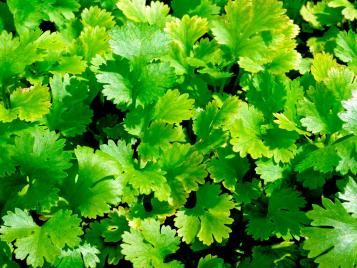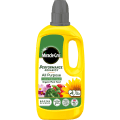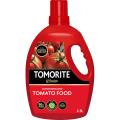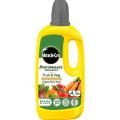

How to grow and care for coriander
Coriander has recently become a very popular herb to grow at home. Grown mainly for its green leaves which are sometimes known as Cilantro and also its spicy seeds, this herb is a must in salads and as a fragrant green addition to Indian, Thai and Chinese curries. The seeds are a vital ingredient of curry powder.
Coriander varieties
Coriander is usually available as the species (Coriandrum sativum), although the variety Calypso has good bolting resistance and can be cut back and allowed to regrow several times. The variety Confetti has fern-like foliage.

What you’ll need to start growing coriander
Growing coriander requires very little equipment. Here’s what you’ll need:
- Coriander seeds
- A suitable pot with drainage holes
- Multipurpose compost
- Balanced liquid feed
Cultivating coriander
Outdoors, coriander prefers a cool position and light shade and very well-drained soil.
Coriander is most commonly grown in a pot - either in a little shade on the patio or on a windowsill that doesn’t receive direct, burning sunlight in summer and which doesn’t get too hot.
Sowing coriander
Sow coriander seeds directly in well-prepared moist soil outside at monthly intervals from March to August for a continuous supply of leaves.
You can also grow it in 15-30cm (6-12in) pots, sowing a few seeds in each and germinating indoors with gentle warmth. Sow every 6-8 weeks to have a constant supply of fresh leaves throughout the year.
Young plants are usually available from garden centres in summer. Plant these out or pot them up into slightly larger pots.
How to care for coriander
When sowing outdoors, thin seedlings or young plants to 5-7.5cm (2-3in) apart. If you specifically want to grow it for its seeds, grow at 20-25cm (8-10in) apart.
Keep the soil or compost moist as it tends to run to seed if allowed to dry out, but take care not to overwater as too much water can lead to rotting - especially in autumn and winter.
Give plants a light liquid feed of a general feed every couple of weeks during late spring and summer. This will help ensure plants go on producing a constant supply of leaves. Don’t use high potassium feeds as these will encourage premature flowering.
If plants become stressed they will run to seed quickly and leaves start to lose their flavour once flowering begins. This is fine if you want to harvest seeds; otherwise discard the plants.
Harvesting coriander
Start harvesting the leaves when they are bright green and young and the plants are 10-15cm (4-6in) tall.
You can treat coriander plants as a cut-and-come-again crop. Otherwise, allow them to run to seed and allow the seeds to develop on the plant and harvest them before they are shed.
Common problems, pests and diseases in coriander
Slugs and snails
Slugs and snails will feed on young coriander seedlings. They can be identified by the slime trails that they leave, as well as the damage they do.
- Check plants at night and remove slugs and snails by hand.
- Strulch is a good deterrent to snails.
- Covering the soil around plants with crushed eggshells or grit may have some effect.
- Scatter environmentally-friendly slug pellets if other methods are insufficient.
Aphids
Aphids are sap-sucking insects which can quickly infest young plants, stunting growth.
- Wipe off small colonies of aphids on coriander with a damp cloth.
- Encourage natural predators like ladybirds and hoverflies.
- Pesticide sprays are available for aphids.
Bolting
Bolting occurs when coriander plants produce flowers and set seed early. As they are annuals, the plants will die once they have set seed. Bolting can be triggered by stress, such as sudden dry periods.
- Plant bolt-resistant cultivars.
- Water regularly.
- Sow new seeds every few weeks to ensure a constant supply of leaves.
Key features of coriander
| Flowering season(s) | Summer |
|---|---|
| Foliage season(s) | Spring, Summer, Autumn, Winter |
| Sunlight | Partial shade, Full sun |
| Soil type | Chalky, Clay, Loamy, Sandy |
| Soil pH | Neutral |
| Soil moisture | Moist but well-drained |
| Ultimate height | Up to 50cm (20in) |
| Ultimate spread | Up to 30cm (1ft) |
| Time to ultimate height | 6 months |




